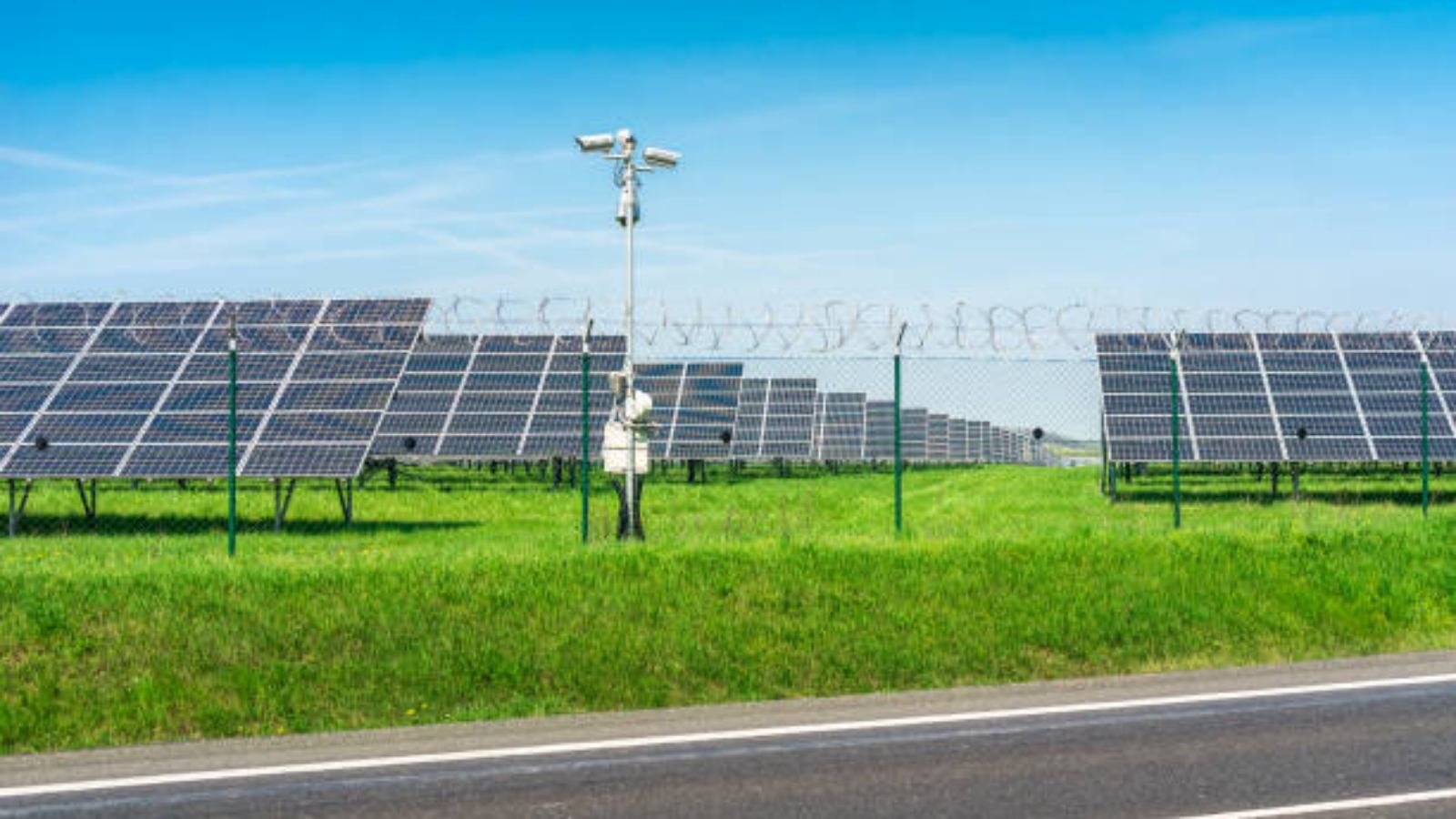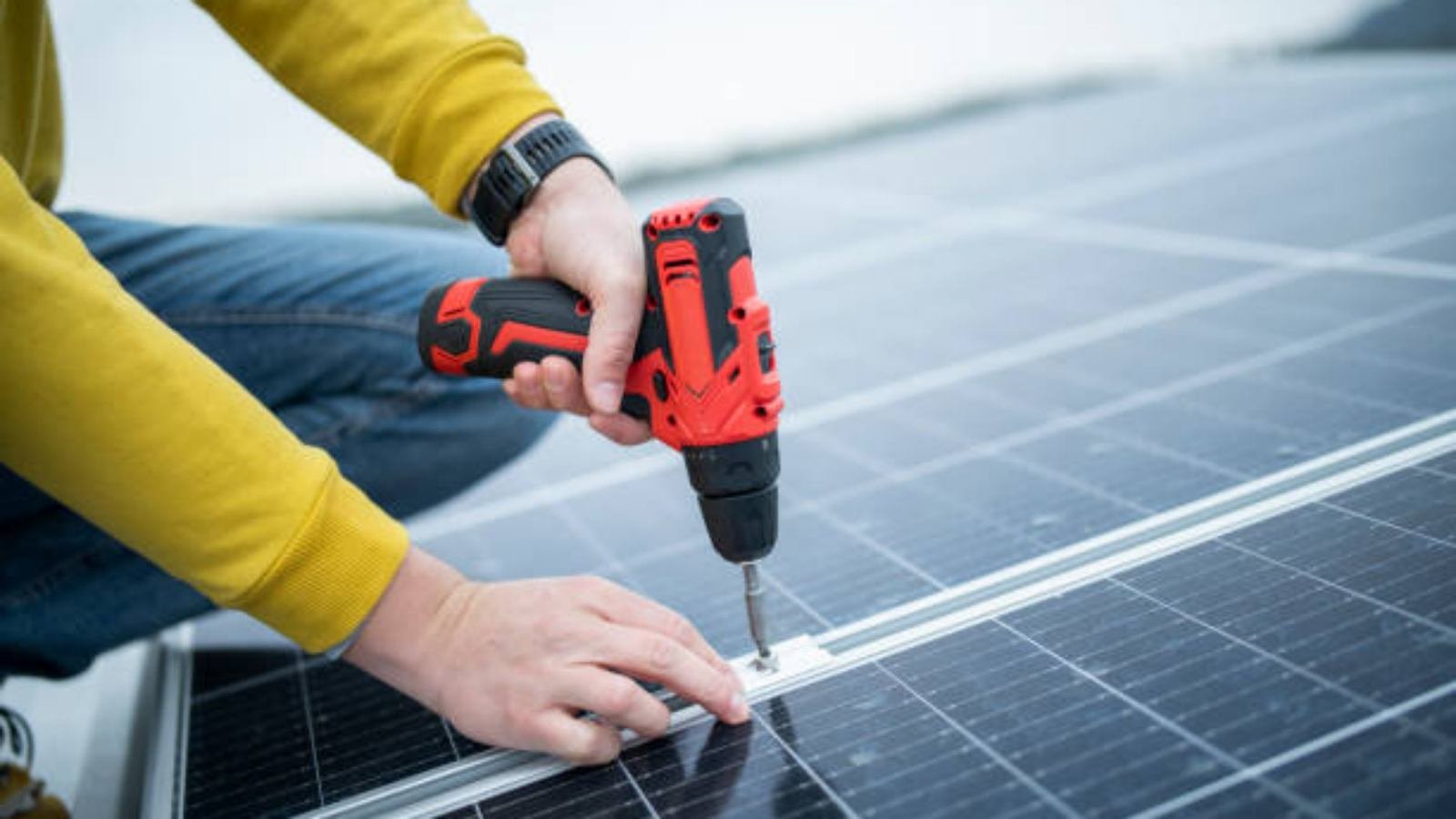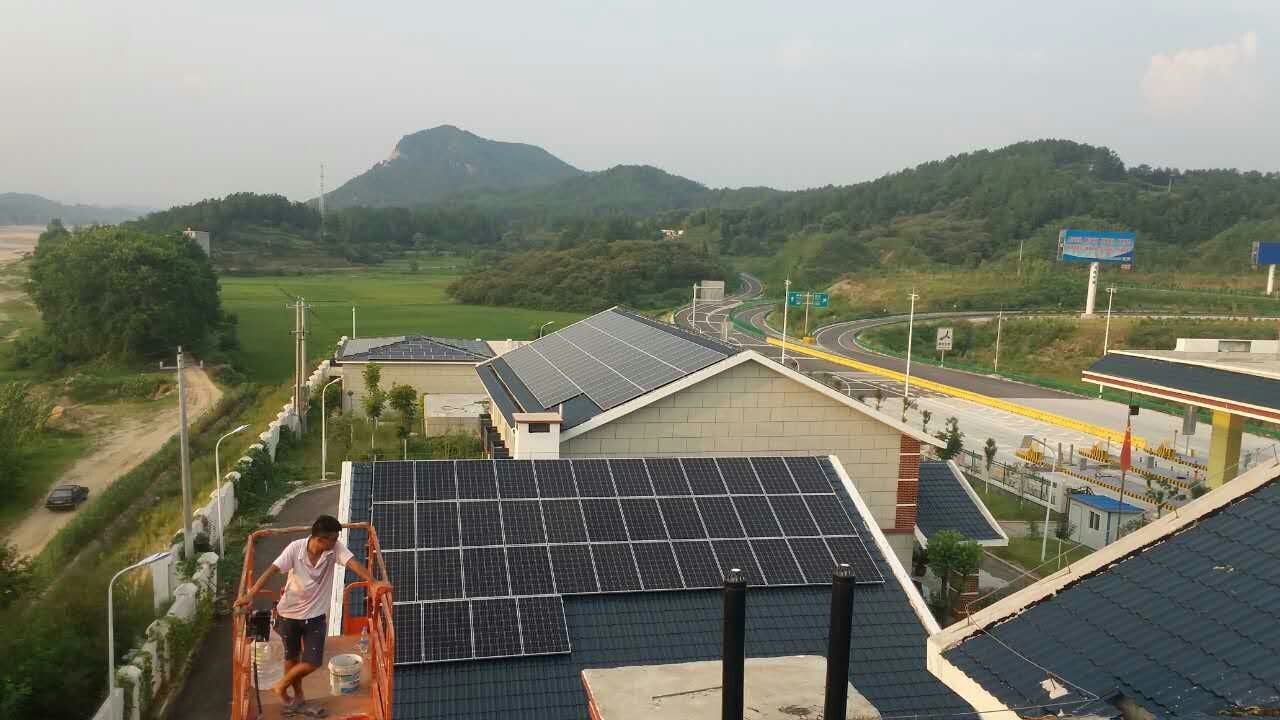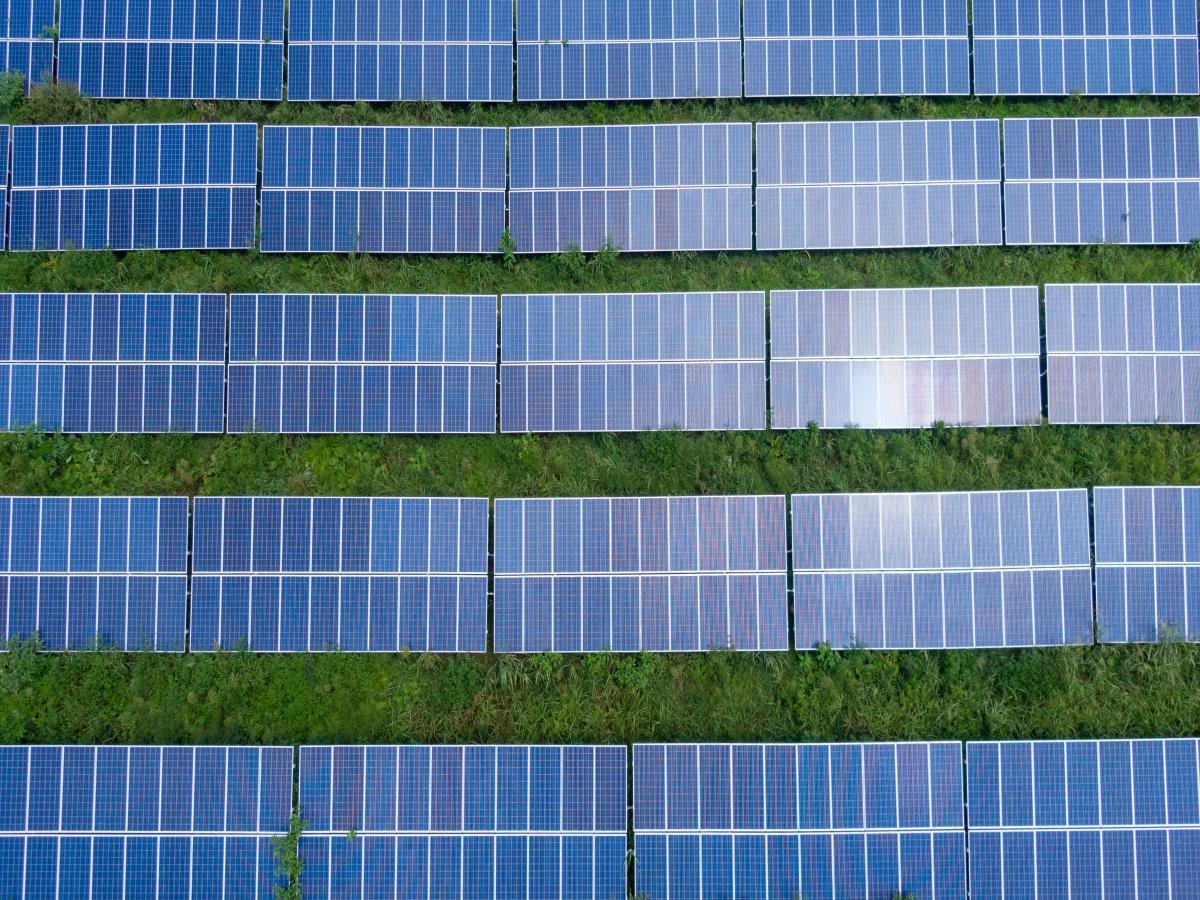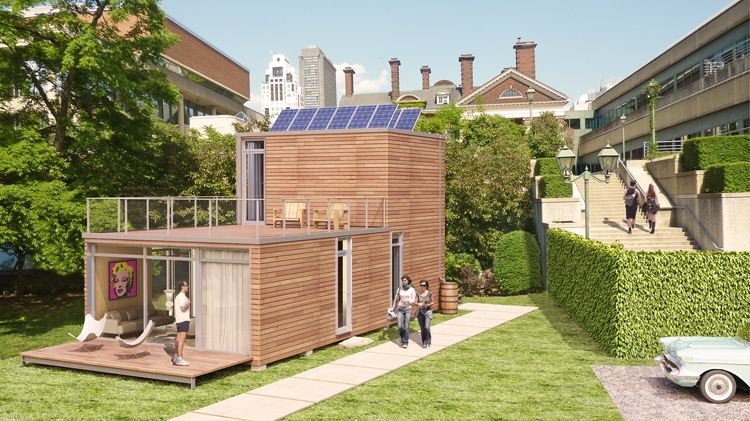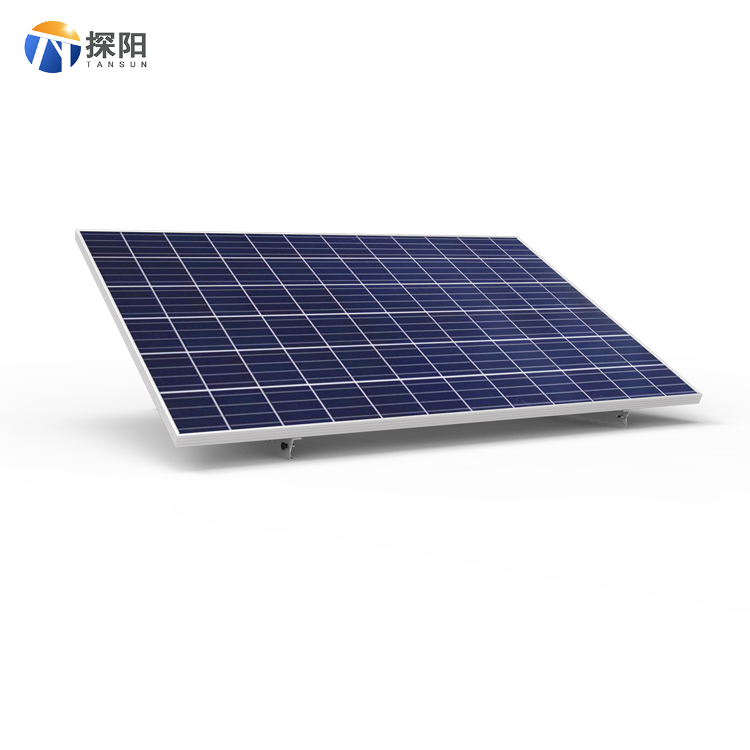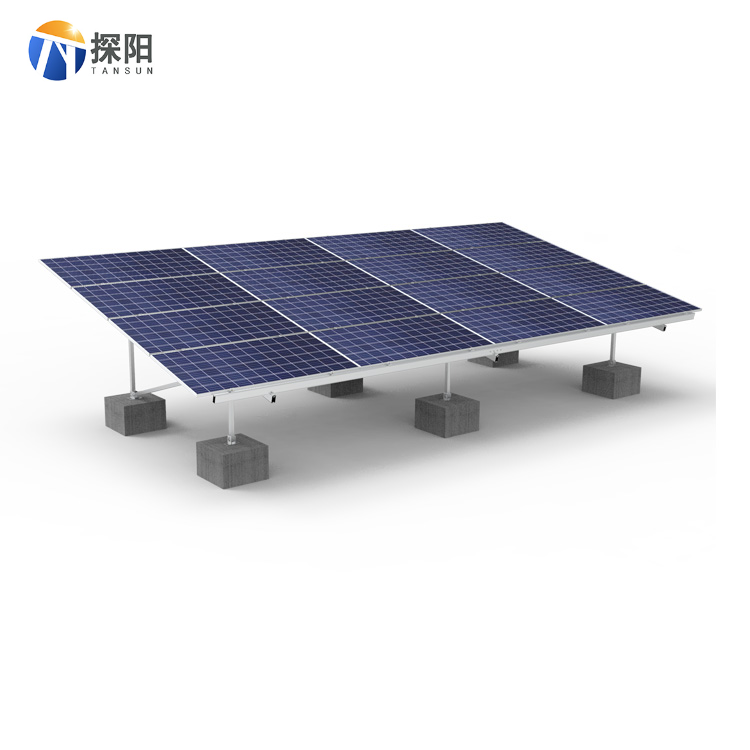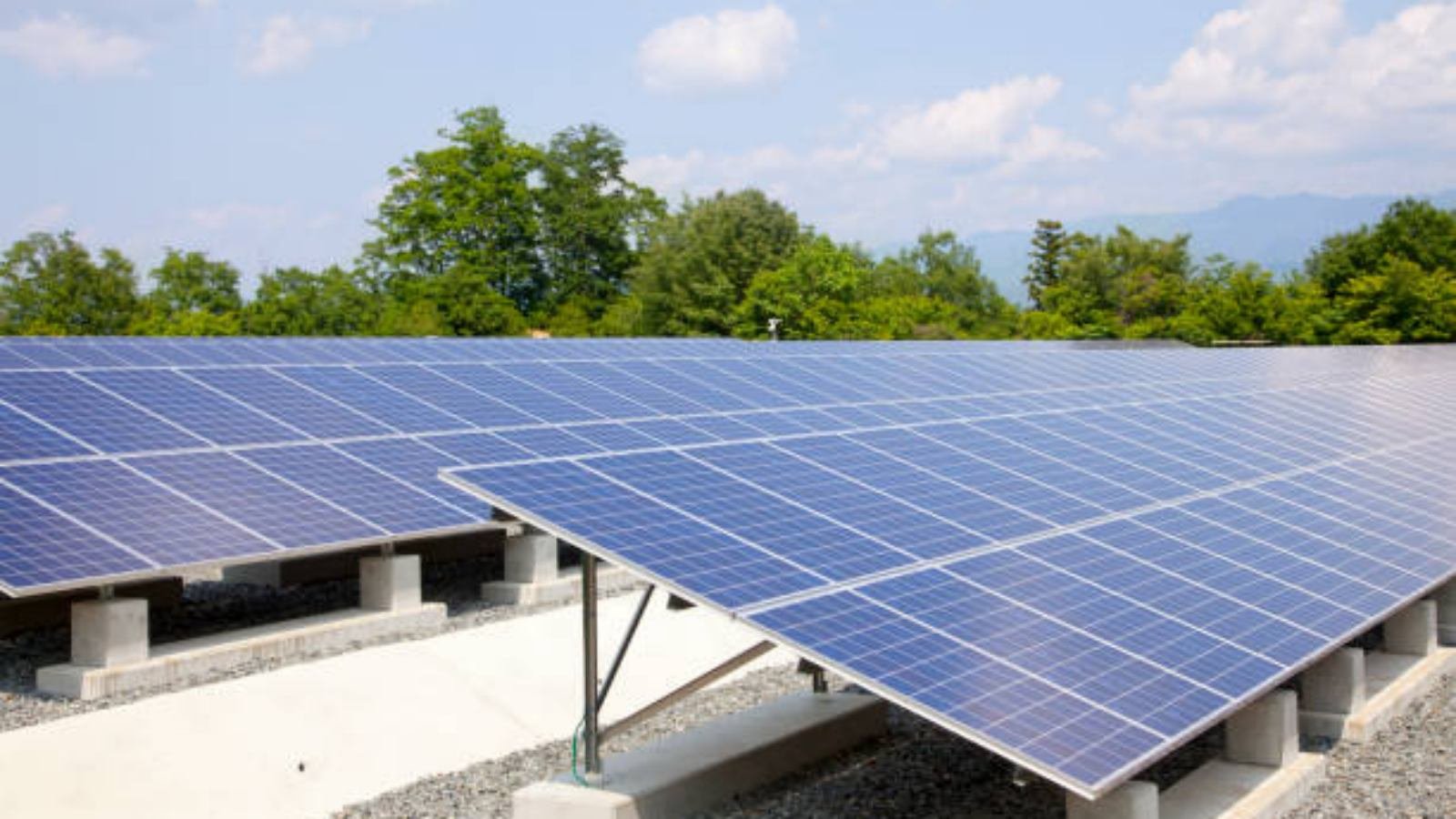Blog
Ground Mount Solar Racking Systems: A Comprehensive Guide
The Advantages of ground mount solar racking systems
Ground mount solar racking systems offer numerous benefits for those looking to install solar panels on their property. Unlike roof-mounted systems, ground mount systems are installed directly on the ground, making them suitable for a wide range of applications. Here are some advantages of using ground mount solar racking systems:
1. Flexibility in System Design and Placement
Ground mount solar racking systems provide the flexibility to design and place solar panels in the most optimal locations. This is particularly beneficial for properties that have limited roof space or are shaded by trees or other structures. With ground mount systems, you can position the panels at the ideal angle and orientation to maximize sunlight exposure and energy production.
2. Easy Maintenance and Accessibility
One major advantage of ground mount solar racking systems is easy accessibility for maintenance and cleaning. Unlike roof-mounted systems, which often require professional assistance for maintenance tasks, ground mount systems can be easily accessed and maintained by the property owner. This accessibility makes it simpler to clean the panels, perform routine inspections, and make any necessary repairs or adjustments.
3. Increased Energy Production
Ground mount solar racking systems can often generate more electricity compared to roof-mounted systems. The ability to position the panels at the optimal angle and orientation allows for increased sunlight exposure throughout the day. Additionally, ground mount systems are typically free from shading, which can significantly reduce energy production in roof-mounted systems.
4. Cost-Effective Solution
While the initial cost of installing ground mount solar racking systems may be higher compared to roof-mounted systems, they often offer a more cost-effective solution in the long run. Ground mount systems have a longer lifespan and require less maintenance, resulting in lower overall maintenance and replacement costs. Additionally, ground mount systems can be easily expanded or upgraded to accommodate future energy needs.
5. Versatility in Site Selection
Ground mount solar racking systems can be installed on a wide range of terrains, including uneven surfaces or areas with slopes. This versatility in site selection makes ground mount systems suitable for properties that may not have a suitable roof for solar panel installation. It also allows for greater flexibility in choosing the best location for energy production and aesthetic considerations.
6. Environmental Benefits
By harnessing the power of the sun, ground mount solar racking systems help reduce reliance on fossil fuels and decrease greenhouse gas emissions. Solar energy is a clean and renewable source of power, making it an environmentally friendly choice. Installing ground mount systems can contribute to a greener future and help mitigate the impacts of climate change.
7. Scalability and Expandability
Ground mount solar racking systems are highly scalable and expandable, allowing for easy system expansion as energy needs increase. Whether you want to add a few more panels or expand the system to cover a larger area, ground mount systems can be easily modified and upgraded. This scalability makes them a versatile option for residential, commercial, and utility-scale solar installations.
8. Enhanced Safety
Ground mount solar racking systems offer improved safety compared to roof-mounted systems. They eliminate the risk of accidents associated with roof access and reduce the potential for damage to the roof during installation or maintenance. Ground mount systems also provide a stable and secure foundation for solar panels, minimizing the risk of panel failure or damage due to extreme weather conditions.
9. Suitable for Agricultural Applications
Ground mount solar racking systems are particularly suitable for agricultural applications. Farmers can utilize unused land or open fields to generate clean energy while continuing their agricultural activities. Ground mount systems can be designed to accommodate farming equipment and livestock, ensuring that the agricultural operations are not hindered by the installation of solar panels.
10. Long-Term Investment
Investing in ground mount solar racking systems is a long-term investment that can provide significant returns over time. With the increasing cost of electricity and the availability of various incentives and rebates for solar installations, ground mount systems offer a reliable and sustainable way to reduce energy costs and gain energy independence.
Quote Inquiry
The Benefits of Using Solar Ground Screws for Your Solar Panel Installation
Introduction
Solar energy is quickly becoming a popular choice for homeowners and businesses alike due to its clean and renewable nature. Installing solar panels is a great way to tap into this sustainable energy source and reduce reliance on fossil fuels. One crucial aspect of solar panel installation is ensuring that they are securely mounted to the ground. This is where solar ground screws come into play. In this article, we will explore the benefits of using solar ground screws and how they can make your solar panel installation more efficient and cost-effective.
1. What are Solar Ground Screws?
Solar ground screws, also known as ground anchors or ground screws, are metal posts with a spiral shape that are designed to be screwed into the ground. They provide a stable and secure foundation for solar panel mounting systems. These screws are made from high-quality materials such as galvanized steel to ensure durability and resistance to corrosion.
2. Easy and Quick Installation
One of the major advantages of using solar ground screws is their ease and speed of installation. Unlike traditional concrete foundations, which require extensive excavation and curing time, solar ground screws can be installed quickly and easily. They are simply screwed into the ground using specialized equipment, minimizing the need for heavy machinery and reducing labor costs.
3. Versatility in Various Soil Conditions
Solar ground screws are designed to be versatile and can be installed in various soil conditions. Whether you have hard clay, rocky terrain, or sandy soil, these screws can be adjusted to provide optimal stability. Their spiral shape allows them to penetrate the ground deeply and securely, ensuring the solar panels remain in place even during extreme weather conditions.
4. Environmentally Friendly
When it comes to sustainability, solar ground screws are an environmentally friendly choice. Unlike concrete foundations, which require the use of cement that contributes to carbon emissions during manufacturing, solar ground screws have a much smaller carbon footprint. They also do not require any chemicals or additives, making them a greener option for solar panel installations.
5. Cost-Effective Solution
Solar ground screws offer a cost-effective solution for solar panel installations. Their quick and easy installation process helps reduce labor costs, while their durability ensures long-term stability, eliminating the need for expensive maintenance or repairs. Additionally, these screws can be easily removed and reused if you decide to relocate or expand your solar panel system in the future.
6. Increased Efficiency
The use of solar ground screws can significantly improve the efficiency of your solar panel system. By securely anchoring the panels to the ground, they can withstand high winds, preventing any potential damage or displacement. This ensures that your solar panels consistently receive optimal sunlight exposure, maximizing their energy production and overall efficiency.
7. Flexibility and Adaptability
Another advantage of solar ground screws is their flexibility and adaptability. They can be easily adjusted to accommodate changes in terrain or panel orientation, allowing for greater flexibility in the design and layout of your solar panel system. Whether you have a flat or sloped surface, solar ground screws can be tailored to meet your specific needs.
8. Enhanced Durability
Solar ground screws are designed to withstand harsh weather conditions and have a long lifespan. Made from durable materials, such as galvanized steel, they are resistant to corrosion, rust, and other forms of deterioration. This ensures that your solar panel installation remains secure and stable for many years, providing you with a reliable and long-lasting source of clean energy.
9. Minimal Environmental Impact
Compared to other foundation options, solar ground screws have minimal environmental impact. Their installation process does not require any excavation or disruption of the natural landscape, minimizing soil compaction and preserving the integrity of the surrounding environment. This makes them an eco-friendly choice for environmentally conscious individuals and organizations.
10. Long-Term Reliability
When investing in a solar panel system, it is important to consider its long-term reliability. Solar ground screws provide a solid foundation that ensures the stability and reliability of your solar panels over time. With proper installation and maintenance, you can enjoy the benefits of solar energy for decades to come, knowing that your solar panel system is securely anchored to the ground.
Quote Inquiry
Everything You Need to Know About Tin Roof Solar Mounts,installing solar panels on metal roof,tin roof solar panels
Everything You Need to Know About Tin Roof Solar Mounts
Are you considering installing solar panels on your tin roof? It's a great decision that can save you money and help the environment. However, before you get started, it's important to understand how tin roof solar mounts work and what factors you need to consider. In this article, we will discuss everything you need to know about tin roof solar mounts, from their benefits to installation tips.
1. Benefits of Tin Roof Solar Mounts
Tin roof solar mounts offer several advantages over other types of solar panel mounts. First and foremost, they are specifically designed to be compatible with tin roofs, ensuring a secure and leak-free installation. Additionally, tin roof solar mounts have a sleek and low-profile design that blends seamlessly with the roof, enhancing the overall aesthetics of your home or building.
Furthermore, tin roof solar mounts are highly durable and resistant to corrosion, making them perfect for long-term use. They can withstand various weather conditions, including strong winds and heavy rain, ensuring that your solar panels stay in place and operate efficiently for years to come.
2. Installation Tips for Tin Roof Solar Mounts
When it comes to installing tin roof solar mounts, it's crucial to hire a professional and experienced solar installation company. They have the necessary knowledge and expertise to assess your roof's structure and determine the best mounting system for your specific needs.
The installation process typically involves attaching the mounting brackets to the tin roof using specialized clamps. These clamps are designed to securely grip the roof without causing any damage. Once the brackets are in place, the solar panels are then attached to them using the appropriate mounting hardware.
3. Factors to Consider
Before installing tin roof solar mounts, there are a few important factors to consider. First, you need to ensure that your tin roof is in good condition and can support the additional weight of the solar panels. A professional solar installation company can assess the structural integrity of your roof and advise you accordingly.
Additionally, the orientation and angle of your roof can affect the efficiency of your solar panels. Ideally, the panels should face south and be tilted at an angle that maximizes sunlight exposure throughout the day. However, if your roof doesn't meet these criteria, alternative mounting options may be available.
Conclusion
In conclusion, tin roof solar mounts are an excellent choice for installing solar panels on your tin roof. They offer numerous benefits, including compatibility with tin roofs, durability, and aesthetic appeal. However, it's essential to hire a professional solar installation company to ensure a successful and safe installation. Consider the factors mentioned above to determine if tin roof solar mounts are the right choice for your home or building.
We welcome any questions or feedback you may have, so don't hesitate to get in touch with our knowledgeable team
Mounting Solar Panels on Metal Roof: The Ultimate Guide
Mounting Solar Panels on Metal Roof: The Ultimate Guide
Introduction: Metal roofs are becoming increasingly popular, thanks to their durability, energy efficiency, and aesthetic appeal. If you're considering installing solar panels on your metal roof, you're making a wise choice that will not only help you save money on electricity bills but also reduce your carbon footprint. However, the process of mounting solar panels on a metal roof can be a bit different from mounting them on other types of roofs. In this guide, we will walk you through the steps of successfully installing solar panels on your metal roof.
Step 1: Assess Your Roof's Suitability
Before you start the installation process, it's essential to determine whether your metal roof is suitable for solar panel installation. The angle, slope, and orientation of your roof can affect the efficiency of your solar panel system. It's best to consult a professional to evaluate your roof and provide you with expert advice.
Step 2: Choose the Right Mounting System
When it comes to mounting solar panels on a metal roof, you have several options to choose from. The most common ones include rack-mounted systems, roof-integrated systems, and ballasted systems. Each mounting system has its advantages and disadvantages, so it's crucial to select the one that suits your specific needs and preferences.
Step 3: Prepare Your Roof
Prior to the installation, you need to ensure that your roof is clean and free from any debris. Additionally, any existing roof penetrations must be properly sealed to prevent leaks. It's recommended to hire a professional roofing contractor to handle this step to guarantee the integrity of your metal roof.
Step 4: Mount the Solar Panels
Once your roof is ready, it's time to mount the solar panels. Follow the manufacturer's instructions carefully, ensuring that the panels are securely attached to the roof. It's important to consider the weight of the solar panels and the wind uplift forces they may experience, especially if you live in an area prone to strong winds.
Step 5: Connect the Wiring
After mounting the solar panels, you need to connect them to your electrical system. This step involves wiring the panels to a solar inverter and connecting the inverter to your home's electrical panel. It's vital to hire a licensed electrician to handle the wiring and ensure compliance with local electrical codes.
Conclusion
Mounting solar panels on a metal roof is a smart investment that can yield significant savings and contribute to a greener planet. By following the steps outlined in this guide, you can successfully install solar panels on your metal roof and enjoy the numerous benefits they offer. Remember to consult with professionals, choose the right mounting system, and ensure proper installation to maximize the efficiency and longevity of your solar panel system.
We welcome any questions or feedback you may have, so don't hesitate to get in touch with our knowledgeable team
Flat Roof Ballasted Solar Racking: Maximizing Efficiency and Savings
Flat Roof Ballasted Solar Racking: Maximizing Efficiency and Savings
The demand for renewable energy solutions is on the rise, and solar power has emerged as a frontrunner in the race to a sustainable future. When it comes to harnessing the power of the sun, flat roof ballasted solar racking is a game-changer. In this article, we will explore the benefits of using flat roof ballasted solar racking, its installation process, and how it can help maximize both efficiency and savings.
Maximizing Efficiency with Flat Roof Ballasted Solar Racking
One of the key advantages of flat roof ballasted solar racking is its ability to maximize energy efficiency. By angling solar panels at the optimal tilt angle, which is typically determined by your location's latitude, flat roof ballasted racking ensures that solar panels receive maximum sunlight throughout the day. This results in higher energy production and increased overall efficiency.
Reduced Installation Costs
Another significant advantage of flat roof ballasted solar racking is its cost-effectiveness. Unlike traditional solar racking systems that require rooftop penetrations, flat roof ballasted racking does not require any roof penetrations. Instead, it uses weighted ballasts or blocks to secure the solar panels in place. This eliminates the need for costly structural modifications and reduces installation time and expenses.
Easy and Quick Installation Process
Installing flat roof ballasted solar racking is a hassle-free process. The system is designed for easy integration with various flat roof types, including EPDM, TPO, PVC, and asphalt roofs. The lightweight design of the racking system allows for quick and straightforward installation, saving both time and labor costs.
Enhanced Durability and Weather Resistance
Flat roof ballasted solar racking is built to withstand harsh weather conditions, ensuring long-term durability. The system is designed to prevent damage from high winds, heavy rains, and snow loads. Additionally, the ballasts used to secure the solar panels in place provide the necessary stability to withstand strong winds, making the racking system resistant to uplift forces.
Conclusion
Flat roof ballasted solar racking offers numerous advantages, including increased energy efficiency, reduced installation costs, easy installation process, and enhanced durability and weather resistance. By choosing flat roof ballasted solar racking, you can maximize both efficiency and savings, making it an ideal choice for residential and commercial solar installations.
We welcome any questions or feedback you may have, so don't hesitate to get in touch with our knowledgeable team
Advantages of Flat Roof Solar Racking for Your Solar System
Advantages of Flat Roof Solar Racking for Your Solar System
Solar energy is a rapidly growing industry, and more and more homeowners are considering installing solar panels on their roofs. One important factor to consider when installing a solar system is the type of racking that will be used. Flat roof solar racking offers several advantages over other types of racking, making it an ideal choice for many homeowners.
1. Easy Installation
Flat roof solar racking is easy to install, which means you can have your solar system up and running in no time. The racking is designed to be simple and straightforward, allowing for quick and efficient installation. This means you won't have to wait long to start reaping the benefits of solar energy.
2. Space Efficiency
Flat roof solar racking is highly space efficient, which is especially important for homes with limited roof space. The racking is designed to maximize the number of solar panels that can be installed on the roof, allowing you to generate more electricity.
3. Better Performance
Flat roof solar racking is designed to optimize the performance of solar panels. The racking allows the panels to be mounted at an optimal angle and orientation, maximizing their exposure to sunlight throughout the day. This results in better energy production and higher efficiency.
4. Durability
Flat roof solar racking is built to last. It is made from high-quality materials that can withstand harsh weather conditions, ensuring that your solar system will continue to operate effectively for years to come. This durability also makes flat roof solar racking a cost-effective choice, as you won't have to worry about frequent repairs or replacements.
5. Flexibility
Flat roof solar racking offers flexibility in terms of panel placement. The racking can be adjusted to accommodate different panel sizes and configurations, allowing for customization based on your specific needs and preferences. This flexibility makes flat roof solar racking suitable for a wide range of solar installations.
Conclusion
Flat roof solar racking is a practical and efficient choice for homeowners looking to install a solar system. Its easy installation, space efficiency, better performance, durability, and flexibility make it an ideal option for maximizing the benefits of solar energy. When considering solar installation, be sure to explore the advantages of flat roof solar racking for a successful and cost-effective project.
We welcome any questions or feedback you may have, so don't hesitate to get in touch with our knowledgeable team
The Benefits of Installing a Flat Roof Solar Panel Kit
The Benefits of Installing a Flat Roof Solar Panel Kit
Solar power is becoming an increasingly popular alternative energy source for homeowners, and one of the most effective ways to harness the power of the sun is by installing a flat roof solar panel kit. In this article, we will explore the benefits of installing a flat roof solar panel kit and how it can save you money in the long run.
1. Energy Savings
One of the biggest advantages of installing a flat roof solar panel kit is the potential for energy savings. Solar panels convert sunlight into electricity, which can be used to power your home's appliances and lighting. By generating your own electricity, you can significantly reduce your monthly energy bills.
2. Environmental Impact
Switching to solar energy is a great way to reduce your carbon footprint and contribute to a cleaner environment. Solar power is a renewable energy source that produces zero emissions, unlike traditional energy sources such as coal or natural gas. By installing solar panels, you can help combat climate change and promote a more sustainable future.
3. Tax Incentives and Rebates
Many governments and utility companies offer tax incentives and rebates to homeowners who install solar panels. These financial incentives can help offset the cost of purchasing and installing a flat roof solar panel kit. By taking advantage of these incentives, you can make solar power even more affordable and cost-effective.
4. Increased Property Value
Installing a flat roof solar panel kit can also increase the value of your property. Solar panels are considered a valuable addition to a home and can make it more attractive to potential buyers in the future. If you decide to sell your home, you may be able to recoup the cost of the solar panel installation and even make a profit.
5. Long Lifespan
Flat roof solar panel kits are built to last. Most solar panels have a lifespan of 25 to 30 years, meaning you can enjoy the benefits of solar power for decades to come. Additionally, many manufacturers offer warranties that cover any defects or performance issues that may arise.
Conclusion
Installing a flat roof solar panel kit is a smart investment for any homeowner. Not only can it save you money on energy bills, but it also has a positive impact on the environment. With tax incentives and rebates available, the cost of installing solar panels has become more affordable than ever. Plus, you can increase the value of your property and enjoy the benefits of solar power for years to come. So why wait? Start harnessing the power of the sun and switch to solar energy today!
We welcome any questions or feedback you may have, so don't hesitate to get in touch with our knowledgeable team
The Ultimate Guide to Solar Panel Flat Roof Mounting System
The Ultimate Guide to Solar Panel Flat Roof Mounting System
Introduction
Solar energy has become increasingly popular as a clean and renewable source of power. Solar panels are a common way to harness the energy of the sun and convert it into electricity. When it comes to the installation of solar panels, one of the key considerations is the mounting system used. In this guide, we will explore the benefits, types, installation process, and considerations for choosing a solar panel flat roof mounting system.
What is a Solar Panel Flat Roof Mounting System?
A solar panel flat roof mounting system is a structure that securely attaches solar panels to a flat roof surface. This system ensures that the solar panels are properly aligned and positioned to maximize sunlight exposure and energy production. It also provides protection against wind uplift and other weather elements.
Benefits of Using a Solar Panel Flat Roof Mounting System
There are several benefits to using a solar panel flat roof mounting system:
1. Easy Installation: Flat roof mounting systems are designed for quick and straightforward installation, making it a cost-effective option.
2. Versatility: These mounting systems can be used on a variety of flat roof types, including concrete, metal, and TPO.
3. Space Efficiency: Flat roofs often have ample space for solar panel installation, allowing for the potential to generate more electricity.
4. Enhanced Performance: The tilt and angle adjustments of flat roof mounting systems optimize solar panel orientation for maximum sunlight exposure, resulting in increased energy production.
Types of Solar Panel Flat Roof Mounting Systems
1. Ballasted Mounting Systems: These systems use weights or ballasts to secure the solar panels to the roof surface. They are non-penetrating and do not require roof penetrations, making them ideal for flat roofs with strict waterproofing requirements.
2. Penetrating Mounting Systems: These systems require roof penetrations to attach the solar panels to the roof surface. They provide a more secure and permanent installation but may require additional waterproofing measures.
How to Install a Solar Panel Flat Roof Mounting System?
The installation process of a solar panel flat roof mounting system involves the following steps:
1. Roof Inspection: Assess the condition of the roof and ensure it is structurally sound and suitable for solar panel installation.
2. Design and Layout: Determine the optimal positioning and arrangement of the solar panels on the roof.
3. Mounting System Installation: Securely attach the mounting system to the roof surface using the appropriate fasteners and techniques.
4. Solar Panel Attachment: Mount the solar panels onto the mounting system, ensuring proper alignment and orientation.
Considerations for Choosing a Solar Panel Flat Roof Mounting System
When choosing a solar panel flat roof mounting system, consider the following factors:
1. Roof Load Capacity: Ensure that the mounting system can support the weight of the solar panels without compromising the structural integrity of the roof.
2. Roof Type Compatibility: Different mounting systems are designed for specific roof types, so choose one that is compatible with your flat roof material.
3. Wind Uplift Resistance: Look for a mounting system that provides adequate wind uplift resistance to protect against strong winds.
4. Waterproofing: Consider the waterproofing requirements of your flat roof and choose a mounting system that minimizes the risk of leaks or water damage.
Conclusion
A solar panel flat roof mounting system is an essential component of a solar energy system. It provides a secure and efficient way to install solar panels on flat roofs, maximizing their energy production potential. By understanding the benefits, types, installation process, and considerations for choosing a mounting system, you can make an informed decision and ensure a successful solar panel installation on your flat roof.
We welcome any questions or feedback you may have, so don't hesitate to get in touch with our knowledgeable team
Ground Mount Solar Racking Systems: A Comprehensive Guide
An Introduction to ground mount solar racking systems
Ground mount solar racking systems are an essential component of solar power installations. These systems provide the necessary support and structure for mounting solar panels on the ground, allowing for efficient and effective utilization of solar energy. In this article, we will explore the various aspects of ground mount solar racking systems, including their types, benefits, installation process, and maintenance requirements.
The Different Types of Ground Mount Solar Racking Systems
There are several types of ground mount solar racking systems available in the market today. Some of the most common ones include:
1. Fixed-Tilt Racking Systems
Fixed-tilt racking systems are the simplest and most affordable option for ground-mounted solar installations. These systems have a fixed angle, usually optimized for the latitude of the installation site, which allows for maximum exposure to sunlight throughout the year. Fixed-tilt racking systems are suitable for sites with ample space and minimal shading.
2. Seasonal Tilt Racking Systems
Seasonal tilt racking systems offer the flexibility to adjust the angle of the solar panels throughout the year. This allows for optimal performance during different seasons when the sun's position and intensity vary. By changing the tilt angle, these systems can maximize energy production and enhance overall system efficiency.
3. Single-Axis Tracking Racking Systems
Single-axis tracking racking systems automatically follow the sun's path from east to west throughout the day. This continuous movement ensures that the solar panels are always perpendicular to the sun's rays, maximizing energy capture. Single-axis tracking systems offer the highest energy production potential but are also the most expensive option.
4. Dual-Axis Tracking Racking Systems
Dual-axis tracking racking systems not only follow the sun's daily path but also adjust the tilt angle to optimize energy capture based on the sun's elevation. These systems offer the highest energy production potential and are ideal for locations with significant seasonal variations and shading issues. However, they are also the most expensive and complex to install and maintain.
The Benefits of Ground Mount Solar Racking Systems
Ground mount solar racking systems offer numerous benefits for solar power installations:
1. Increased Energy Production
By mounting solar panels on the ground, these racking systems allow for optimal placement and orientation. This ensures maximum exposure to sunlight, resulting in increased energy production and higher overall system efficiency.
2. Flexibility in Site Selection
Ground mount systems provide flexibility in choosing the installation site. Unlike rooftop solar installations, ground mount systems can be placed in areas with better sun exposure, away from shading obstacles such as trees or surrounding buildings. This makes them ideal for locations where rooftops are not suitable for solar panel installation.
3. Easy Maintenance and Accessibility
Ground mount solar racking systems offer easy access for routine maintenance and cleaning. Without the need for climbing onto roofs, technicians can inspect and service the solar panels more conveniently, leading to lower maintenance costs and improved system performance.
4. Scalability and Expandability
Ground mount systems are highly scalable and expandable, making them suitable for both small-scale and large-scale solar installations. The modular nature of these racking systems allows for easy addition or removal of solar panels as the energy needs of the site change.
Installation Process of Ground Mount Solar Racking Systems
The installation of ground mount solar racking systems involves several key steps:
1. Site Assessment and Design
Before installation, a thorough site assessment is conducted to determine the optimal location, tilt angle, and orientation of the solar panels. This assessment takes into account factors such as shading, soil conditions, and local regulations. Based on the assessment, the racking system is designed to ensure maximum energy production.
2. Foundation Preparation
The ground is prepared for the installation of the racking system by excavating and leveling the area. Concrete footings or ground screws are then installed to provide a stable foundation for the racking system. The number and size of the footings depend on the size and weight of the solar panels.
3. Racking System Assembly
The racking system components are assembled on-site, following the manufacturer's instructions. This involves attaching the rails, supports, and panel clamps to create the framework for mounting the solar panels. The wiring and electrical connections are also made during this stage.
4. Panel Mounting
The solar panels are securely attached to the racking system using panel clamps or other suitable mounting hardware. Care is taken to ensure proper alignment and spacing between panels to maximize energy capture and minimize shading.
5. Electrical Connections
The electrical connections between the solar panels, inverters, and grid connection points are made according to local electrical codes and regulations. This includes wiring the panels in series or parallel configurations and ensuring proper grounding and protection against overcurrent and lightning.
6. System Testing and Commissioning
Once the installation is complete, the system undergoes rigorous testing to ensure proper functioning and compliance with safety standards. This includes checking for electrical continuity, insulation resistance, and performance under different weather conditions. Once the system passes all tests, it is commissioned for operation.
Maintenance Requirements for Ground Mount Solar Racking Systems
Maintaining ground mount solar racking systems is crucial to ensure their long-term performance and durability. Here are some key maintenance requirements:
1. Regular Inspections
Periodic inspections should be conducted to check for any signs of damage, such as loose bolts or cracked components. Any issues should be addressed promptly to prevent further damage and ensure the structural integrity of the racking system.
2. Cleaning
The solar panels should be cleaned regularly to remove dust, dirt, and debris that can reduce their efficiency. This can be done using water and a soft brush or with the help of automated cleaning systems. Care should be taken to avoid scratching the panel surface.
3. Vegetation Control
Vegetation around the ground mount solar racking system should be kept under control to prevent shading and potential damage. Regular trimming or removal of trees and plants in the vicinity is necessary to maintain optimum sunlight exposure.
4. Monitoring and Performance Analysis
A comprehensive monitoring system should be in place to track the performance of the solar panels and the overall system. This allows for early detection of any issues or deviations from expected performance, enabling timely corrective measures.
5. Professional Maintenance Services
Engaging professional maintenance services can ensure the timely and efficient upkeep of ground mount solar racking systems. These experts have the knowledge and experience to identify and resolve any maintenance issues, ensuring the long-term reliability and performance of the system.
Quote Inquiry










